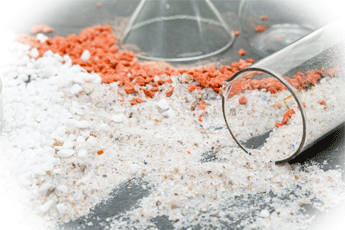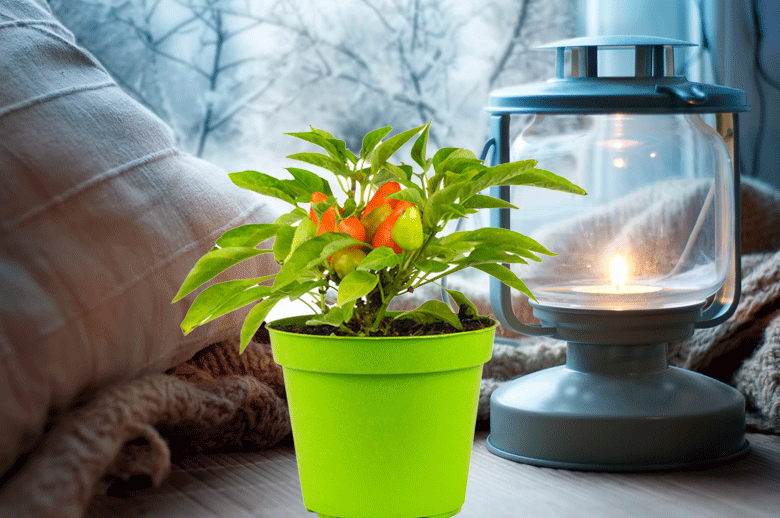What I am overwintering
While we regard Chillies as annuals in the UK, they are perennials in their natural environments. In these environments, it rarely reaches freezing the way it does here during winter. As a result, most Chillies subjected to the freezing conditions during winter in the United Kingdom will die. Full stop. A few varieties are cold weather resistant (to a certain extent), but none can cope with frost.
So, if we want them (or a selected few at least) to survive wintry conditions, the plants need to be brought indoors or kept in a protected environment outdoors. This process is called overwintering.
This year, I am overwintering twelve plants. Two of these (yellow Scotch bonnets) are in their second overwintering. I overwintered them for the first time last year. The remaining plants are four Satans kisses, an Aji Crystal, an Apache, three Barak Chillies and two unknowns (somehow, I managed to lose their markers). In time, once they flower again, I will attempt to identify them
are in their second overwintering. I overwintered them for the first time last year. The remaining plants are four Satans kisses, an Aji Crystal, an Apache, three Barak Chillies and two unknowns (somehow, I managed to lose their markers). In time, once they flower again, I will attempt to identify them
Usually, I cut plants back for overwintering. I also always keep them in the warmest room in our house, out of direct sunlight. Under most circumstances, this means placing the plants in an area next to our fireplace in our lounge.
While I keep them in the lounge as I usually do, I didn’t prune any of these plants this year, as I might have done in previous years. I took the view that except for the Aji Crystal, my Scotch bonnets, and one bigger Satan’s kiss, my smaller plants could be considered to be ornamentals. They are, on average, only about twelve inches tall. They were also exceptionally pretty Chillies and had aesthetic appeal. With this in mind, I resolved to treat the smaller plants as house plants. For the larger plants, I decided to wait for them to lose their leaves before I pruned them back.
How are the plants faring?

The current situation
Roll on a couple of months after the end of last season. At this point, six of my smaller plants have either very few or no leaves at all. My Scotch bonnets lost all their leaves, and I trimmed them right back. All of these plants are either in or approaching dormancy.
The remaining plants I am overwintering have not gone dormant. (Not at this point anyway). The Apache, a Satan’s Kiss, and the unknowns, have managed to retain their foliage. Also, surprisingly, two of my larger plants have kept their leaves. I certainly wasn’t expecting them to
The two remaining larger plants (an Aji Crystal and a Satan’s Kiss) were too big to be brought indoors, so I overwintered them in my garage. The garage has heaters, so the plants haven’t been too exposed to the cold. However, while the garage may be heated, it is undoubtedly not as warm as my lounge. Despite this, not only have the plants retained their leaves, but their foliage is outstanding.
The Aji Crystal, in particular, has an exceptional amount of very green leaves. There is no other way of describing it except as outstanding. I can only believe this is due to this Chilli falling under the C baccatum species. It is a species with cold weather resistance. It is a quality it shares with Capsicum pubescens Chiilies like Rocotos. If what has happened with my Aji Crystal this winter is anything to go by, there is certainly no doubt that this species can resist the cold. I am impressed
Fertilisation & watering

The differences
The fertilising and watering of my plants in dormancy has been different to those who have retained their leaves. I have been giving the dormant plants far less fertiliser and watering them less frequently. This is because they don’t require as much fertilising and watering when they are in this state. Instead, they get their nutrition from sugars and carbohydrates they store up for winter during the growing season. The plants still require water, but it is done far less frequently. I water mine every two to three weeks, and even then, it is only a light watering. It is purely a matter of getting the soil most. This is done because, not only do plants need less water in dormancy, but if you give them too much, the roots may start rotting.
frequently. I water mine every two to three weeks, and even then, it is only a light watering. It is purely a matter of getting the soil most. This is done because, not only do plants need less water in dormancy, but if you give them too much, the roots may start rotting.
While they can probably look after themselves from a nutrition point of view, I still give my dormant plants some fertiliser. I don’t give them too much, though. Instead, I provide the plants with a liquid fertiliser made by mixing Chilli Focus at 5ml per lire of water at every second watering. I will continue to do this until spring, until I see the first signs of new growth. I will then start feeding them a high nitrogen fertiliser, so they can rapidly regain their foliage.
The plants with leaves get fed with 10 ml of Chilli Focus to a litre of once a week. If they lost their leaves and started showing signs of dormancy, I would cut back on my fertilisation and watering.
Finally
Some might argue that the reason for cutting plants back is to place them in a position where they don’t have to expend energy on parts they no longer need. After all, it’s only the roots of a plant that need to survive. The stem, leaves, etc., are no longer required when a plant is in dormancy. I agree with this. However, I didn’t need to prune any of these plants this overwintering, as it was not necessary. I usually cut the plants if they are exceptionally large, and are going to take up a lot of space. Luckily, this year, I didn’t have that problem, so I was able to leave the plants as they were.

